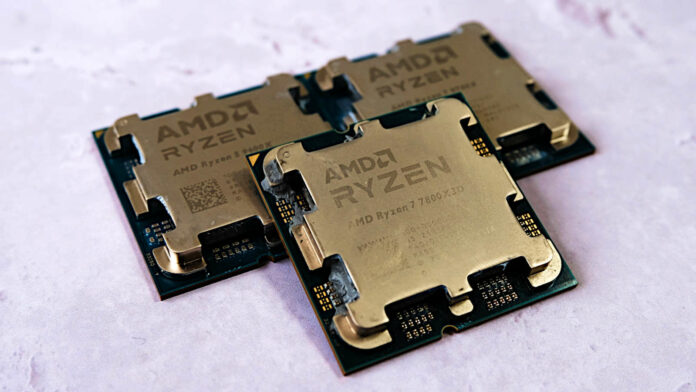Newer doesn’t necessarily mean better. AMD Ryzen 9000X processors illustrate this maxim in several ways, despite their merits. The generational gap between Zen 4 and 5 is there but modest in many respects. Truthfully, though, these aren’t the chips I’m looking for. I’m holding out for Ryzen 9000X3D instead, and I’ll explain why.
Gaming performance is paramount to any processor purchase I make, as it’s what I primarily use my system for (I hope the boss isn’t reading this). This priority has naturally pushed me towards 3D V-Cache models, settling on Ryzen 7 7800X3D as my daily driver. Even now, it maintains its position as the best CPU in this category despite fresh-faced Zen 5 challengers.
The Need For 3D V-Cache
To showcase the benefits of 3D V-Cache, I’m using curated data from our Ryzen 7 9700X and Ryzen 5 9600X review.
I’ll also be focussing on gaming benchmarks run at 1080p as these are the best showcase of a CPU-bound scenario. As a reminder, we ran these processors alongside a GeForce RTX 4090 to capture these results. Games simply don’t run faster than this.
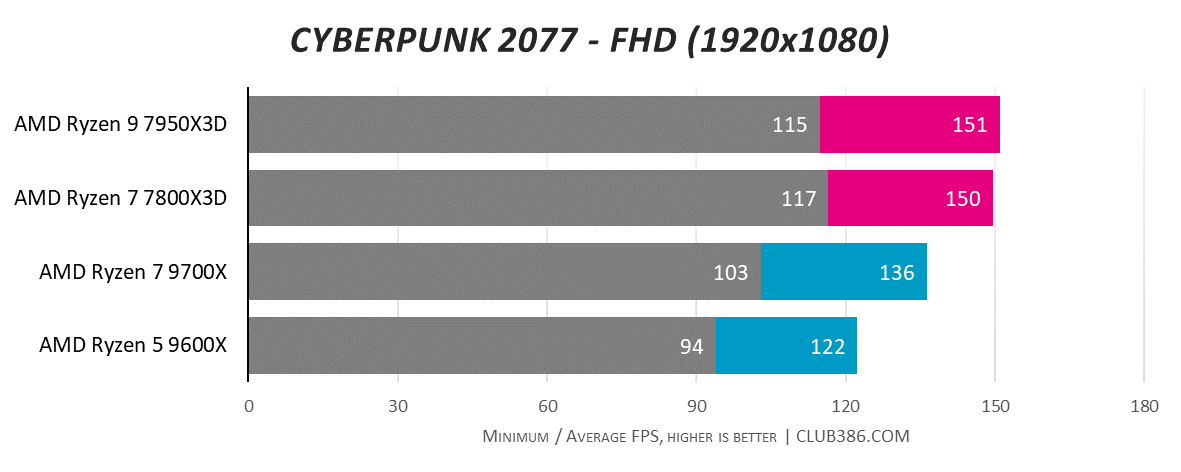
Cyberpunk 2077 serves as a shining example of how much of a difference 3D V-Cache can make. Both 7000X3D CPUs outclass the admittedly mid-range 9000X brethren in minimum and average frame rate, in large part due to this technology.
Note, Ryzen 9 7950X3D struggles to take a decisive lead despite its apparent advantages. This is due to its dual-complex compute die (CCD) design. While each chiplet houses the same amount of cores, one boasts more cache than the other (96MB vs 32MB). This can create performance shortfalls in games, but only Ryzen 9 SKUs suffer from this quirk. That’s why 7800X3D regularly stands alongside its higher-end sibling.
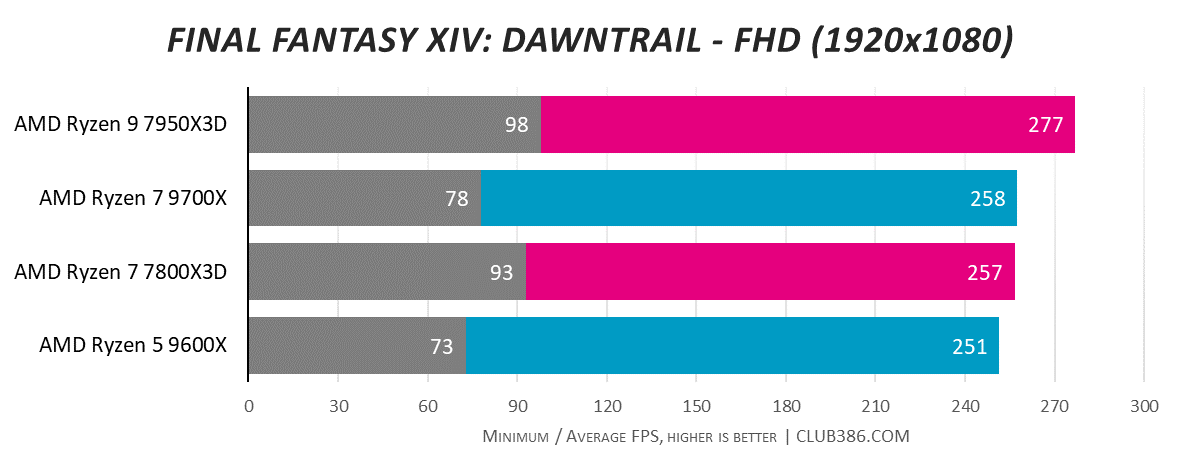
The gaps between 7000X3D and Ryzen 9000X aren’t as pronounced in Final Fantasy XIV: Dawntrail, but 3D V-Cache still maintains an advantage. While 7800X3D is one frame short of matching 9700X, its minimum fps is decidedly higher. Ergo, it delivers a more consistent level of performance, keeping you at a higher frame rate for longer.
To the credit of 9600X and 9700X, though, they are keeping pace at a markedly lower TDP. On paper, there are 55 watts between the 9000X (65W) and 7800X3D (120W) chips. This advantage is Zen 5 in action, leaving Zen 4 looking relatively inefficient by comparison.
Cache Isn’t Always King
Much as I champion 3D V-Cache, it’d be remiss of me to omit its shortcomings. AMD’s framerate-boosting magic is by no means applicable to all games.
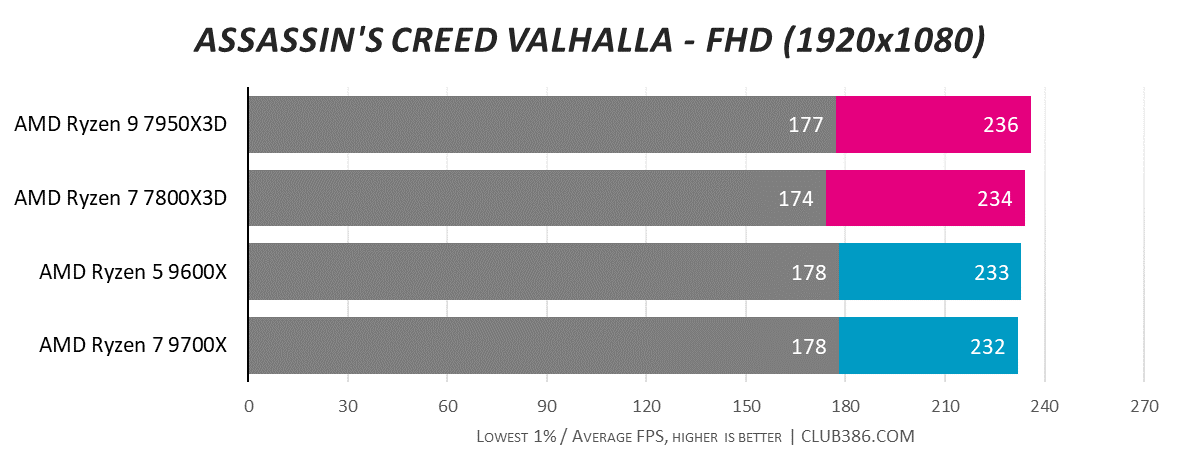
Assassin’s Creed Valhalla couldn’t care less whether it’s running on Ryzen 9000X or 7800X3D, cache be damned. Performance is practically indistinguishable across the two series, with each delivering frame rates in excess of 230fps.
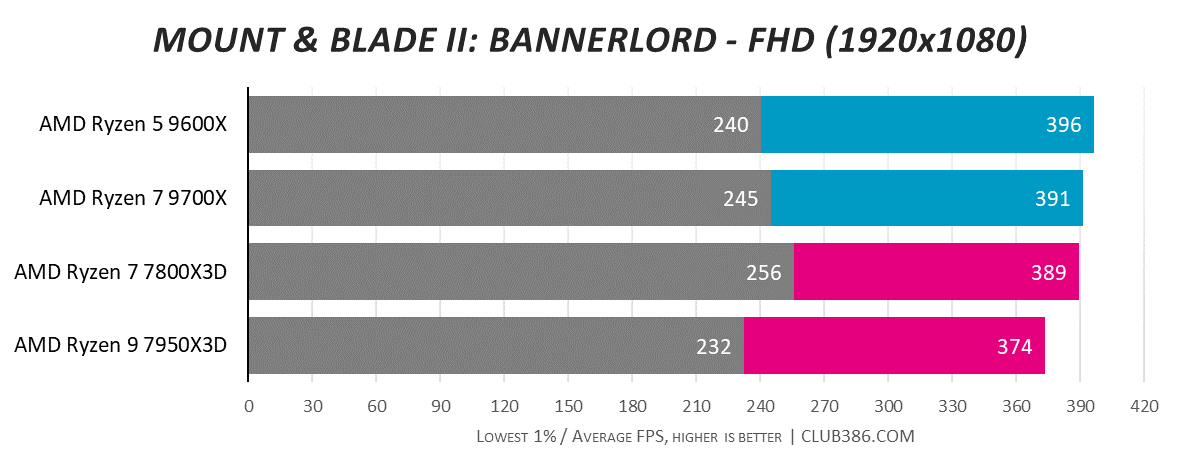
Meanwhile, Ryzen 9000X average frame rates lord over 7000X3D in Mount & Blade II: Bannerlord, where clock speed takes a prominent role.
Of course, these results are only reflective of the current state of affairs. The same is true of the ones clearly favouring 7000X3D discussed earlier. The question then becomes: What happens when Zen 5 and 3D V-Cache collide? Theoretically, 9000X3D processors should deliver the best of both worlds.
The Promise of 9000X3D
We know that 9000X3D processors are en route, possibly sooner than you might think. As we’ve seen above, Zen 5 CPU cores help close the gap with their Zen 4 X3D counterparts. Gamers, naturally, are excited about the prospect of combining 3D V-Cache with a new architecture.
That’s not forgetting other improvements, such as efficiency. Using current chip TDPs as a yardstick, we could see lower-wattage X3D models materialise in the near future. AMD has suggested that the next implementation of 3D V-Cache will incorporate greater advancements than extra cache alone, so we’re intrigued to see what else might be in store.
Hopefully, we see AMD address the asymmetrical design of dual-CCD processors highlighted above, giving a would-be Ryzen 9 9900X3D and 9950X3D added value. While we’re adding to the wishlist, full overclocking support, faster clock speeds, or even larger cache pools wouldn’t go amiss. Of course, all of these requests are no small ask but we can all dream until the official specification sheet is released.
The advent of 9000X3D processors should also drive the price of 7000X3D stock down, making the latter even better value buys for gamers on a budget. We’re also expecting X870E motherboards to launch around the same time, so keep an eye out for X670E discounts, too.
Whichever way you cut it, gamers would do well to wait and see how 9000X3D tips the proverbial performance scales. Heck, if you’re not already on AM5, waiting for Intel Arrow Lake to get a full lay of the land may be a wise move.
Until then, we’ll be sure to keep an eye out for any 3D V-Cache developments. You can also expect comprehensive Club386 benchmarks and analysis on 9000X3D processors once they emerge from the AMD labs.

